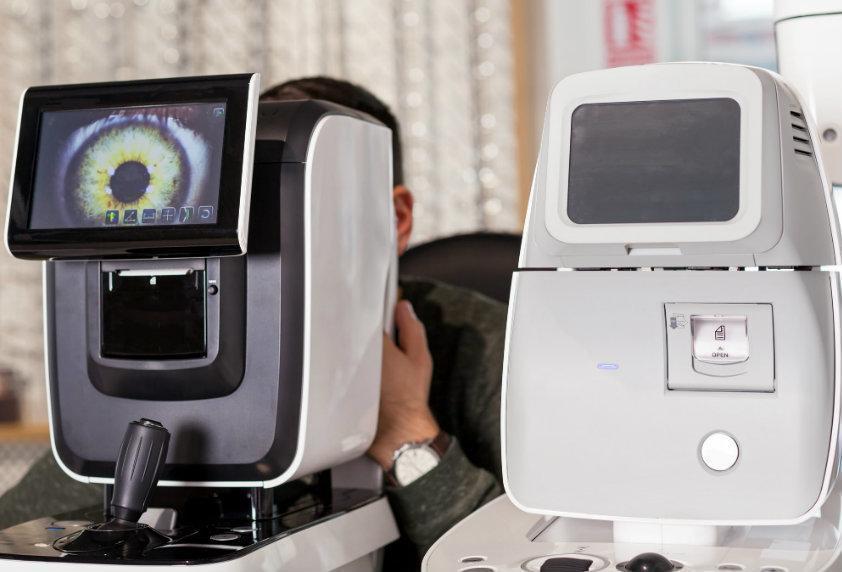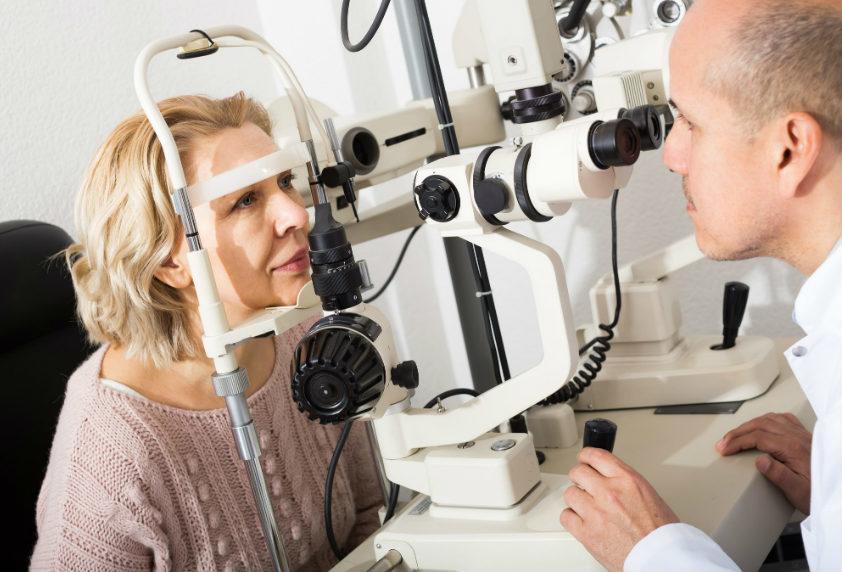Your eyes are expressive. They share emotion – happiness, sorrow, surprise – and they can also share information about your health. For instance, if the whites of the eyes are yellow, liver disease may be the culprit. If they’re red and watery, it could be a sign of an allergic reaction, hay-fever or symptoms of a cold or flu.
With so much health information visible on the eye’s exterior, imagine what is discoverable when you look beneath the surface. If an eye doctor can detect disease early, particularly one that is as prevalent and treatable such as diabetes, then it may lead to more successful outcomes.
This article explores whether an eye doctor can detect diabetes during an exam. You’ll discover facts about the connection between eyes and diabetes, so you can make informed decisions about your health.
What is the connection between diabetes and the eyes?
More than 30 million Americans had diabetes in 2015 and there are 1.5 million new cases each year. This disease causes an individual to have too much glucose in their body which can lead to serious health problems, according to the Mayo Clinic.
Well-known optical complications that are connected to diabetes are sometimes called “Diabetic Eye Diseases.” These conditions include retinopathy, glaucoma and cataracts which could endanger your ability to see, according to the Glaucoma Research Foundation.
While cataracts are more likely to occur in individuals who have diabetes, age is a strong contributing factor. When glaucoma is associated with diabetes, it occurs after diabetic retinopathy has progressed. The disease that is most closely associated with diabetes is retinopathy.
What is diabetic retinopathy?
The National Eye Institute describes diabetic retinopathy as, “the most common diabetic eye disease and a leading cause of blindness in the United States.”
Symptoms include:
- Blurry vision
- Floaters
- Slow or rapid loss of vision
How is diabetic retinopathy detected?
Standard eye exams won’t detect diabetic retinopathy, but a dilated eye exam by an ophthalmologist or optometrist can detect it. The NEI recommends an annual dilated exam for:
- Individuals who are 60 or older
- African Americans after age 40 due to their higher incidence of glaucoma
- Individuals who are diabetic
What happens during a dilated eye exam?
The doctor will give you eye drops to dilate, or open, your pupils This provides a better view of the back of your eye. The eye doctor examines your eye through a special magnifying glass and uses a bright light to examine the:
- Optic nerve
- Blood vessels in and around the retina
- Back of the eye
Your doctor might also use a special camera to capture an image of areas that he or she would like to examine further. The doctor will then go over the results of the exam or tell you if further tests need to be performed.
Your pupil will remain open for four to six hours following the exam, according to WebMD. During that time, your pupils won’t be able to protect your eyes from sunlight, so if you’re outside following dilation, keep sunglasses handy to protect your eyes.
Other eye exams that help detect diabetes
1. Ophthalmoscopy
Ophthalmoscopy allows your eye doctor to see the back of the eye where the retina and optic nerve is. An ophthalmoscope is a magnifying tool that is used to examine the eye to detect abnormalities.
2. Slit-lamp exam
A slit-lamp exam uses a special microscope and light source to get a 3-D view the outside and inside of the eye. This is sometimes used with an ophthalmoscope to complete an exam.
3. Optical coherence tomography
This exam detects fluid in your retina and other signs of damage that could indicate diabetic retinopathy, glaucoma or macular degeneration. Prior to the test, dilating drops are used to widen the pupil so light beams can be focused on the back of the eye.
Talk to your eye doctor about diabetes
Although an ophthalmologist or optometrist can use certain tests to detect signs of diabetes, without the correct exam and a qualified eye doctor the warning signs that point to diabetes can be missed.
To maintain your health, schedule regular appointments with your eye doctor and share any health changes that have occurred since your last appointment.
Establish a relationship with an eye doctor who is tuned into your eyes and overall health, so they can detect the changes in your eye that could be a sign of serious health issues. If you are looking for an optometrist or ophthalmologist to help keep your eyes healthy, schedule an appointment with Southwestern Eye Center today.

